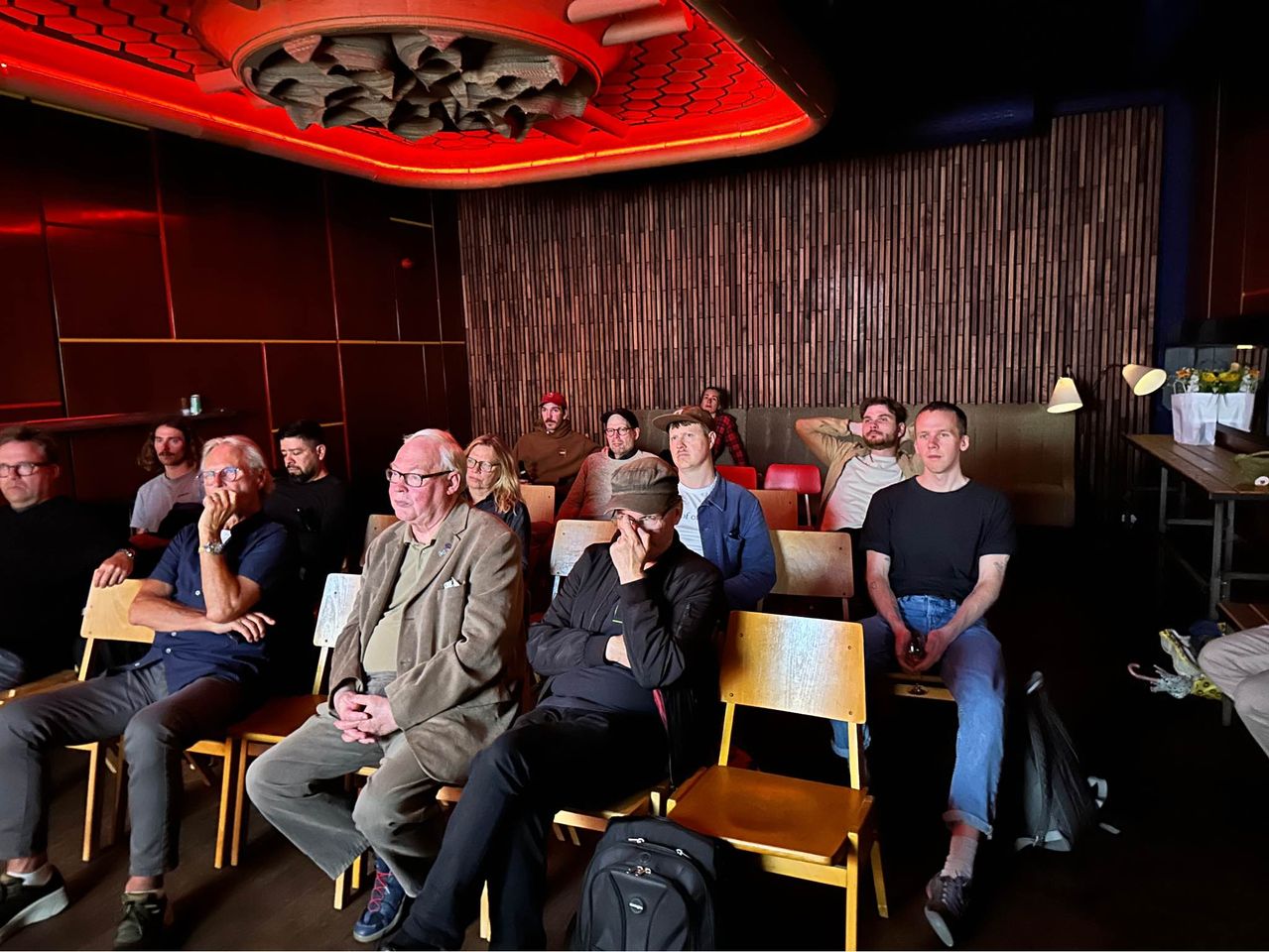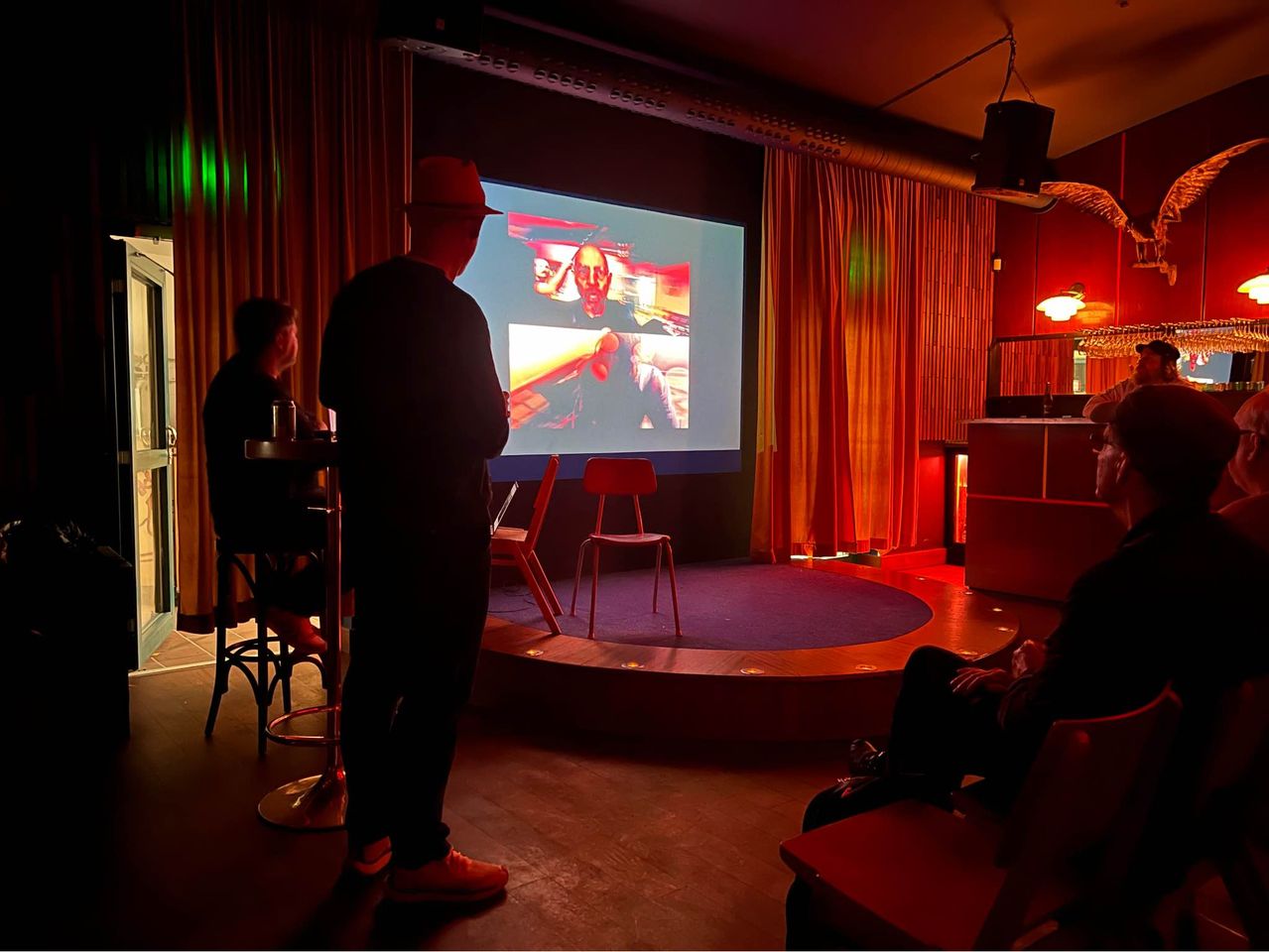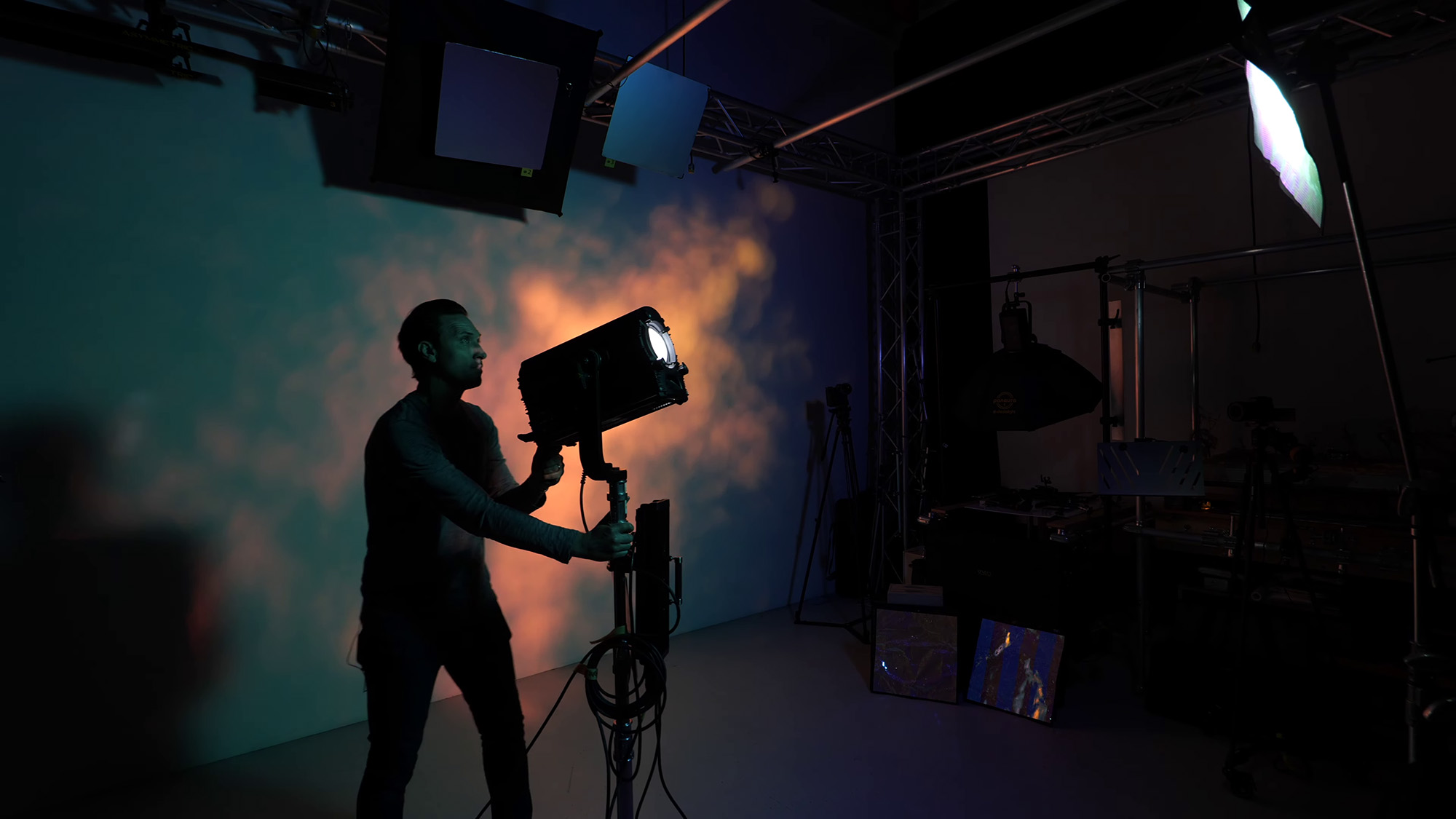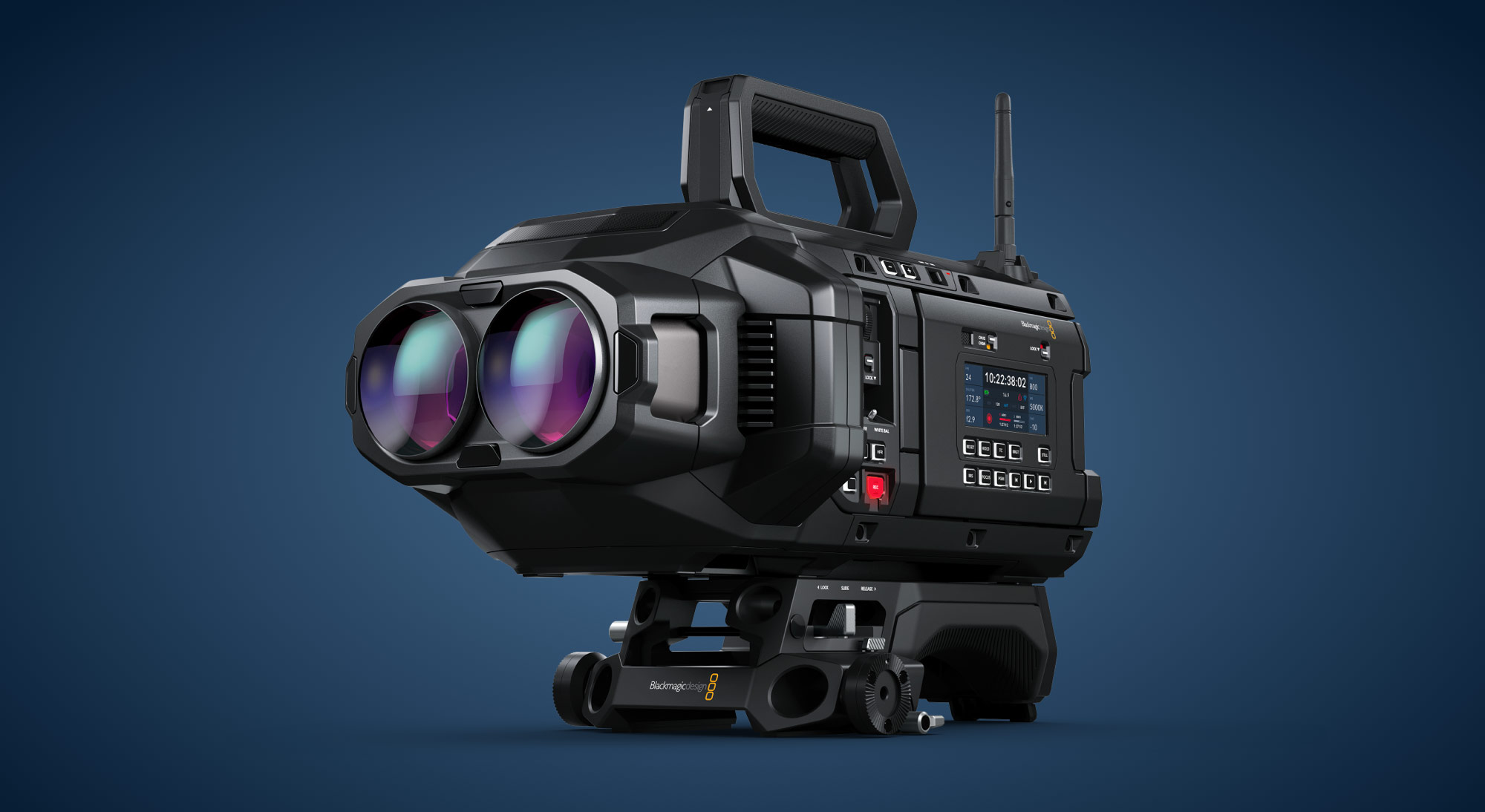BSC Expo: Film Lighting Special
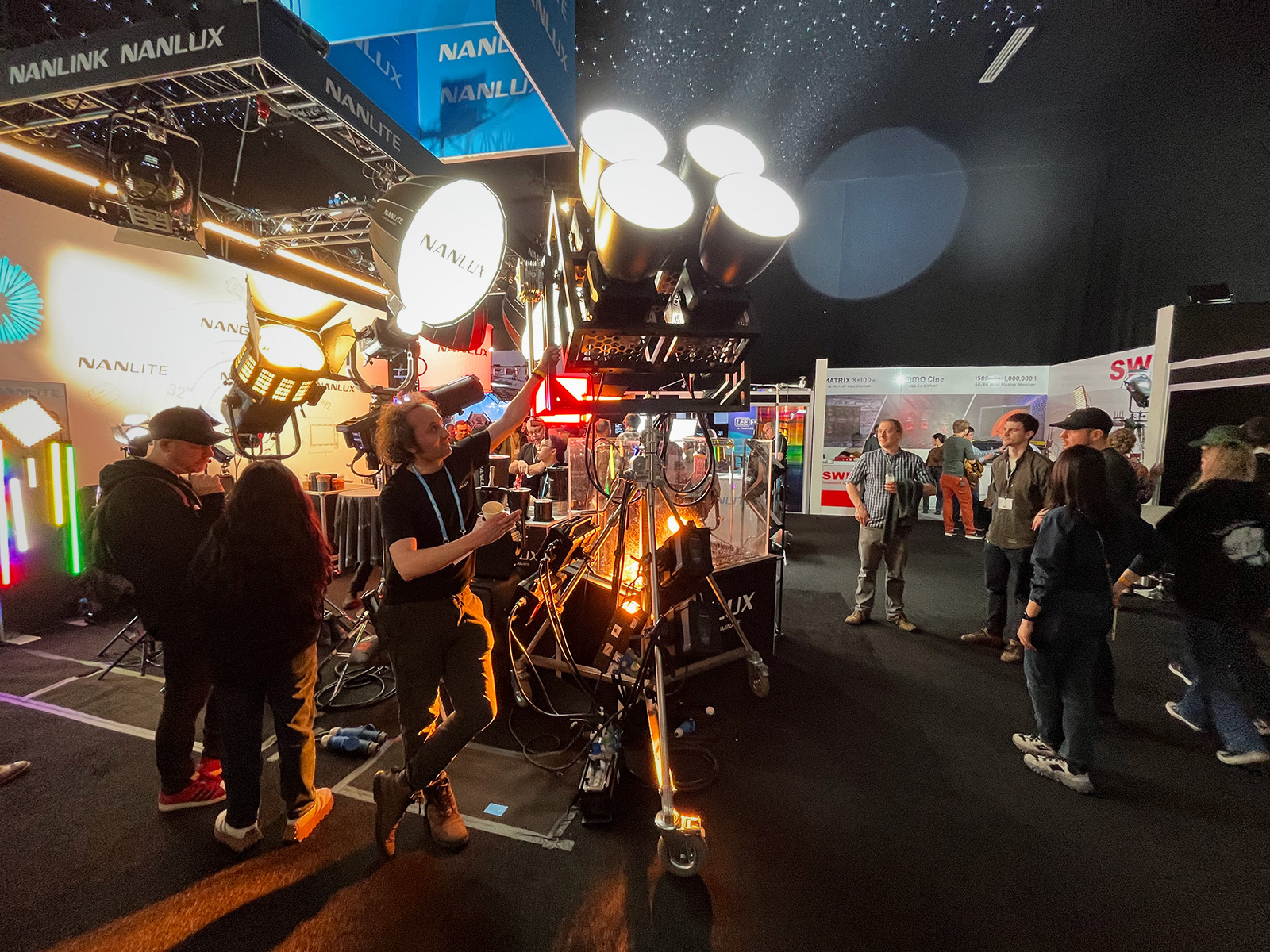
The expo is a smorgasbord of lighting equipment with seemingly more options than ever. This is an attempt to create an overview of current trends and new fixtures. The focus is on finding out what attributes separate the various manufacturers. LED’s are getting more powerful, three colour chips are replaced by five or six colour chips, and IP rating is the new default. I identify three other trends emerging;
Lights dedicated for virtual production1, interchangeable LED chips and remote-controlled flood, spot, pan and tilt. In no particular order, let’s dive in.
We’ll start off with ARRI, who shows off the new generation of Skypanel. Their big selling points is the stackability, the updated colour engine and the IP rating2. Three Skypanel X stack together and give you an output exceeding that of the Skypanel 360. A nice feature is that the frost panel can be removed for more punch when using the light indirectly. The profile is more streamlined with the PSU integrated, but it’s heavier compared to the first generation. They explain that a design with IP rating tends to add weight. The unit borrows the control panel from the Orbiter. Speaking of; the Orbiter has got a new 4 degree spotlight modifier. The claim is that it’s the punchiest spotlight of the expo. It’s an impressive spotlight, but with 300w it doesn’t pack that much muscle. I wonder when ARRI will bring out a more powerful version, but no beans are spilled in that regard.
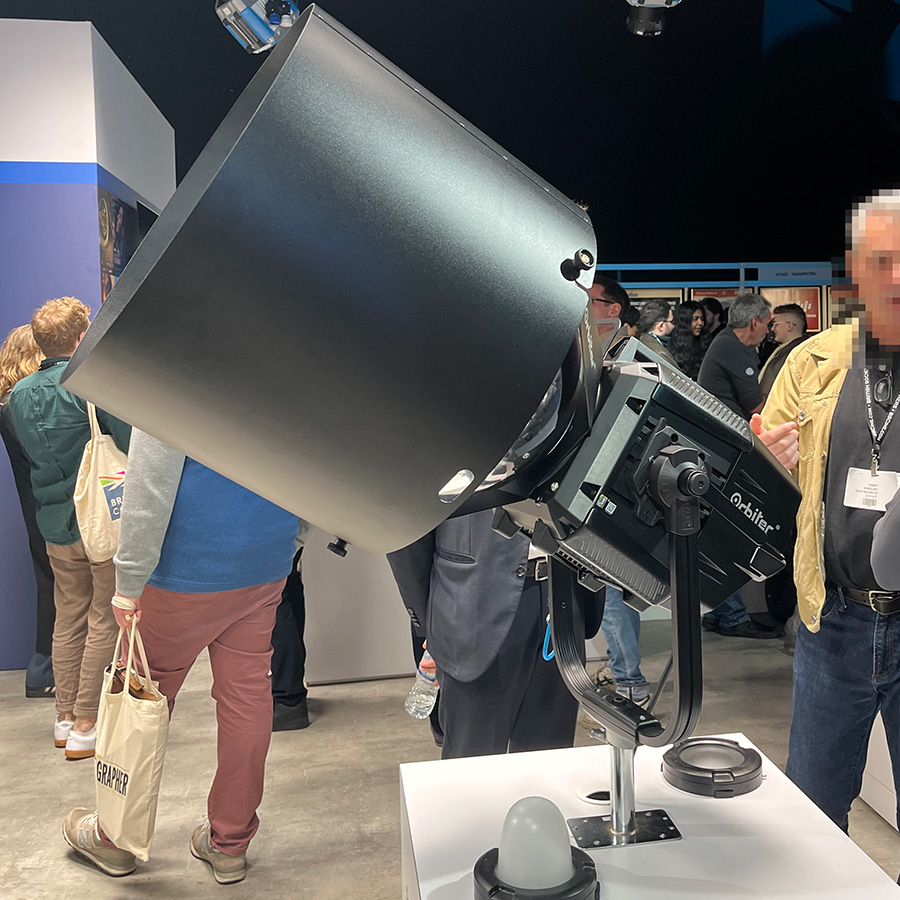
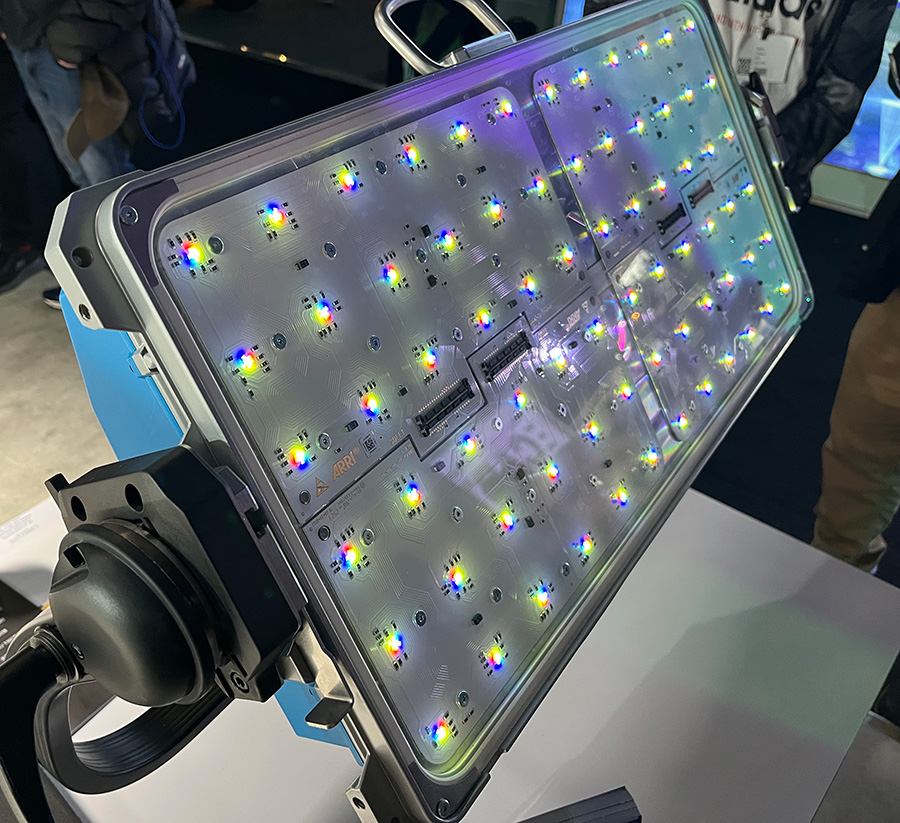
Nanlux is very visible at this expo. Together with Aputure they boost about arguably more bang for your buck fixtures, compared to the traditional players like Arri. Nanlux is showing off their Evoke 2400 light, it’s up against the Electro Storm XT26 from Aputure. These are 2400w and 2600w units respectively. Both units are bi-colour but the Evoke 2400 has got built in plus and minus green. I think this is a clever move. Not only does it save time with gels, it also opens up for a longer life-span as the unit can be calibrated to match over time. But it means sacrificing subtly on the output, if the wattage translates straight to lumen we can guess that the Electro Storm has 8% more output, that should translate to less than ¼ stop but it’s something. Both manufacturers have released motorised fresnels for their bigger units. Flood and spot on DMX, yes please, pretty neat. Aputures fresnel feels like something out of a Michale Bay movie and weighs in at 20kg, while Nanlux have found a way to fit the new mechanics onto the previous design, which comes in at only 10kg’s. Both units are IP rated. Impressive leaps forward. Nanlux also showed off a new projection mount that fits their larger units like the Evoke 900C, it feels very much like the familiar Source 4.

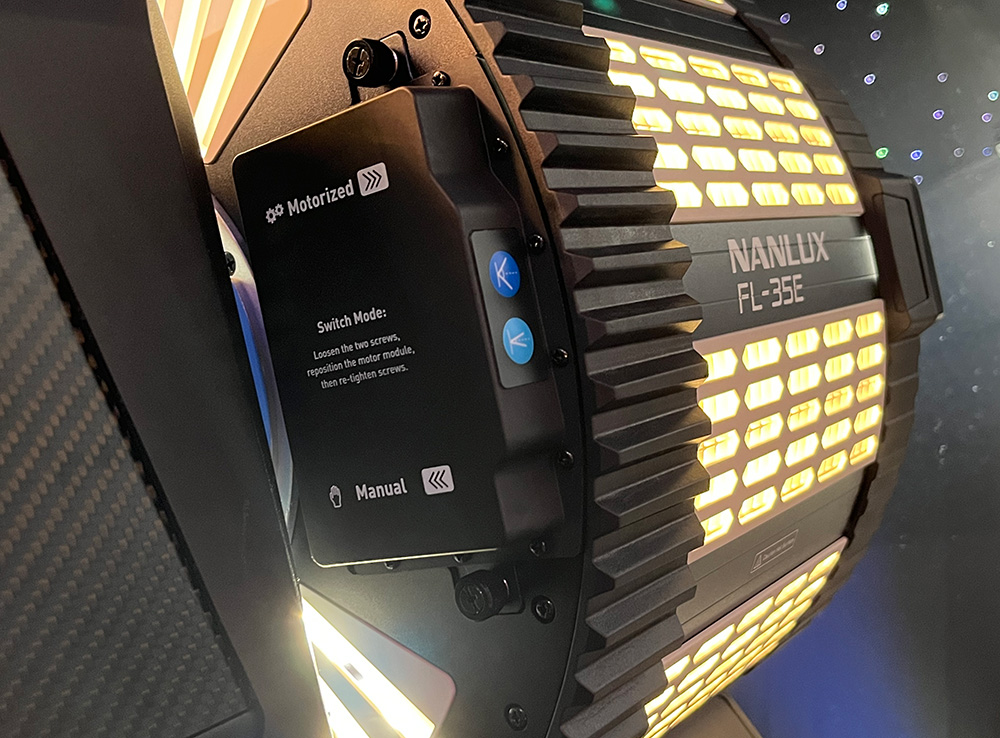

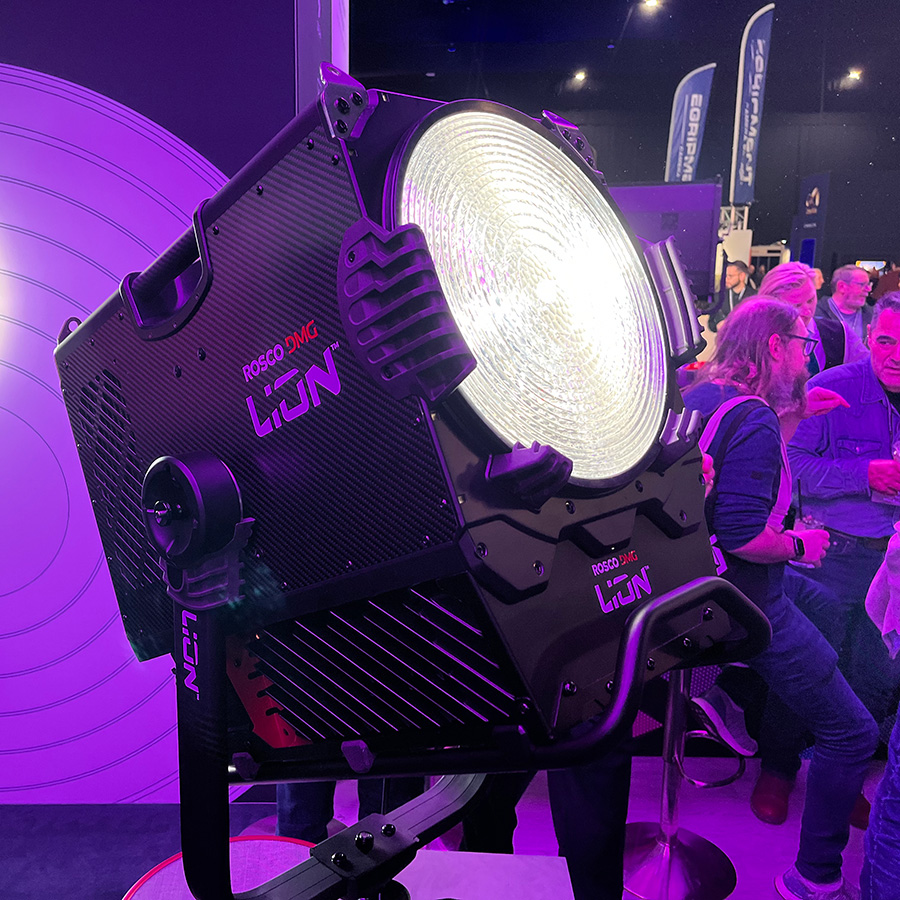

Rosco’s DMG Lion was one of the head-turners. It doesn’t look like any other light on the show. It’s a beast! And the box shape is odd for a light. The size and weight is explained by the built in PSU and the mechanised Fresnel. I’m of two minds here. It makes for a tidier setup, quick to rig, but it’s also more weight that calls for heavier stands, and it’s definitely not for a menace arm. But the most unique feature with this design is that you can change the LED. Currently, there’s a 1kW daylight, and a 1kW bi-colour chip. You can change the chip quickly through a little hatch on the back. While 1k is not that impressive, not a for fixture of this size, it’s a design that’s built to grow in. I welcome the idea of modularity and upgradability in a COB light. Good for the planet, good for our pocket. Time will tell if they release more powerful sensors that stack up with the competition in terms of output. In terms of colour accuracy, they make high claims, being Rosco I have faith in their colour science, but it would require testing to know for sure.
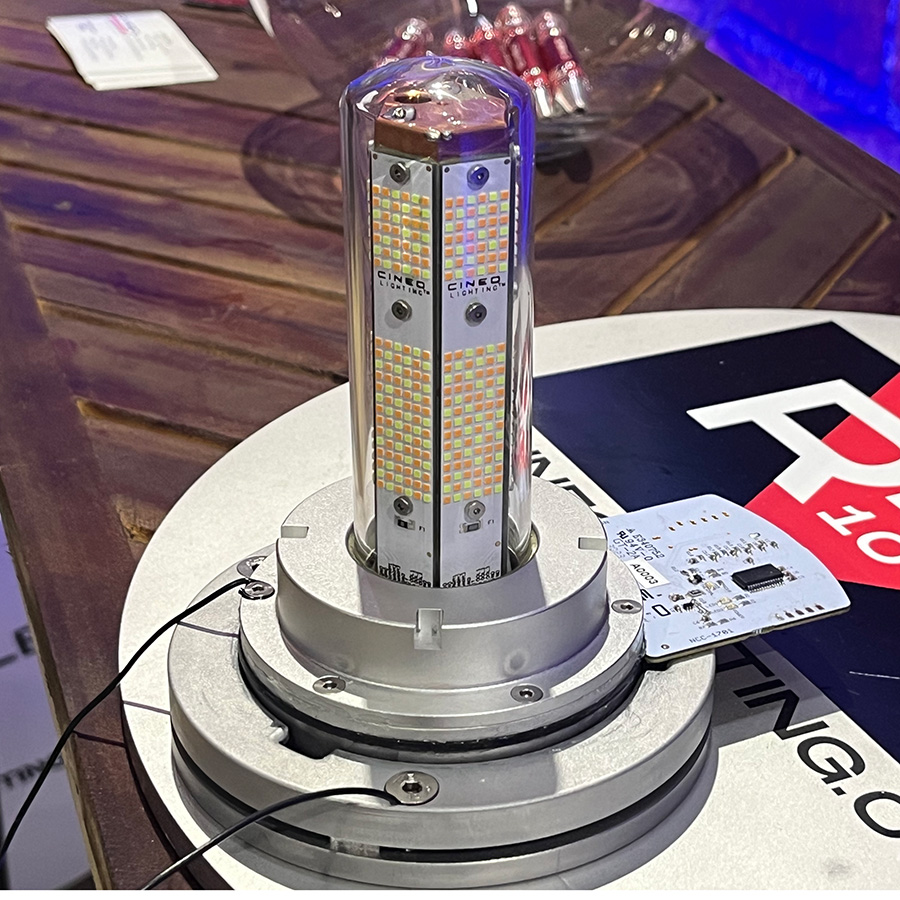
Cineo is also carving out a niché, unveiling their new Reflex 10 unit. Another modular fixture with an interchangeable LED bulb of sort. Instead of a flat COB chip, the LED’s emitting unit here is column shaped. They call it an LED Tower, and it’s interchangeable between Bi-colour and RGB. Another modular design. It feels like this would distribute the light more evenly in a lantern modifier compared to a flat COB. The LED Tower consists of a series of chips which can be individually addressed via DMX, which sets it apart from similar units, useful for animated light and in a VP environment. The power is only 1kW and it comes in at a hefty 26 kg’s. It also boost liquid cooling and it’s IP rated.
Cirro Light shows off the Air Lux series by Pheon Lux, carving out another niché amongst LED units. With their Air Lux series they offer what they call Air Cushion Lights. Lightweight inflatable LEDs. These are RGBWW units with a self-inflating mechanism for quick rigging. At the moment they come in three different sizes as well as in a column design, and they make grids for them if you need to control the spill. It feels like a solid option for a soft top-light on location. Pheon Lux also show off their Pixel Tube, which takes up competition with units like the Asteras Titan. Their selling point here is that they have replaceable batteries.
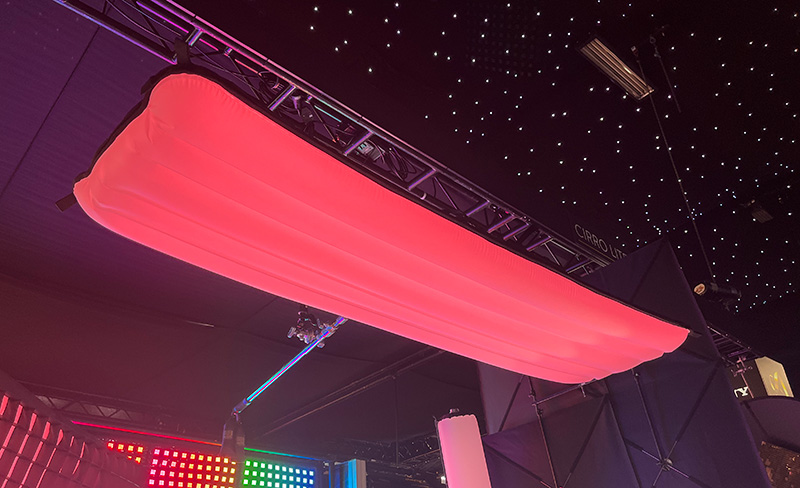
From our neighbours in Norway comes the Kelvin. The stylish aluminum square housing immediately grabs my attention. The LED chip is dome shaped and boosts a Six-Colour Light Engine, RGBACL. They’ve had a 300w unit on the market for a while but they are now releasing the 600w unit; Epos 600. What they claim separates them from the competition is the durable material choices as well as the colour science. The Epos 600 is also IP rated. They don’t make any promises on what’s coming next but they say it’s probably something stronger.
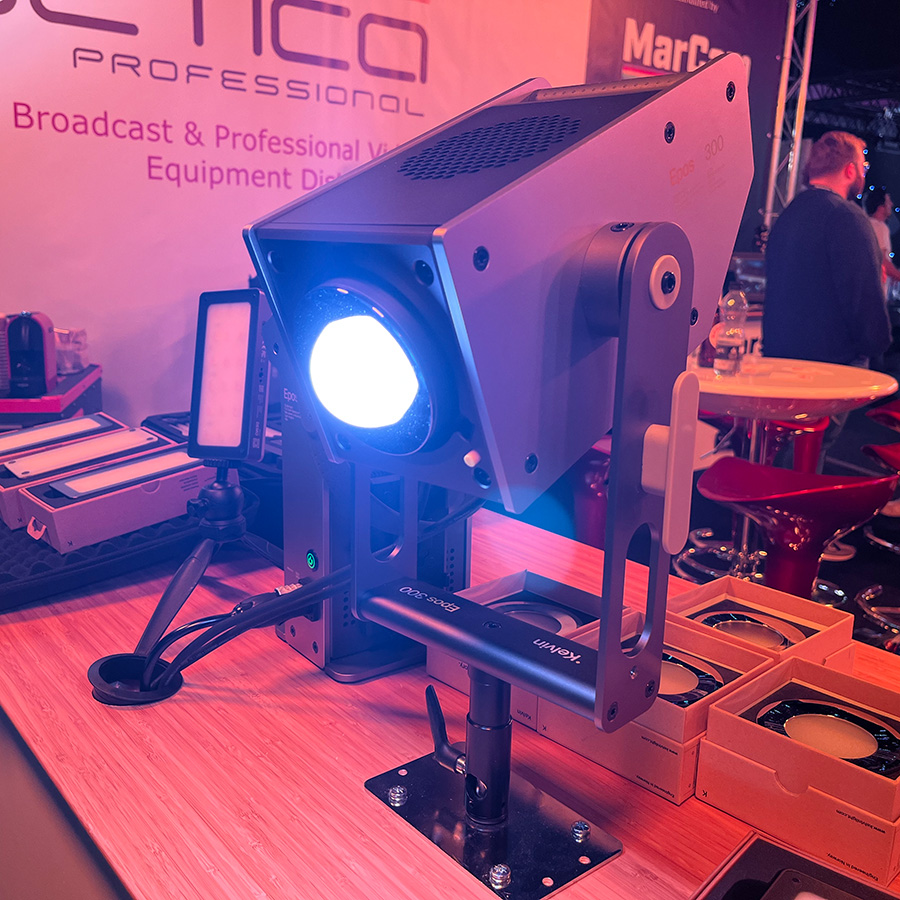
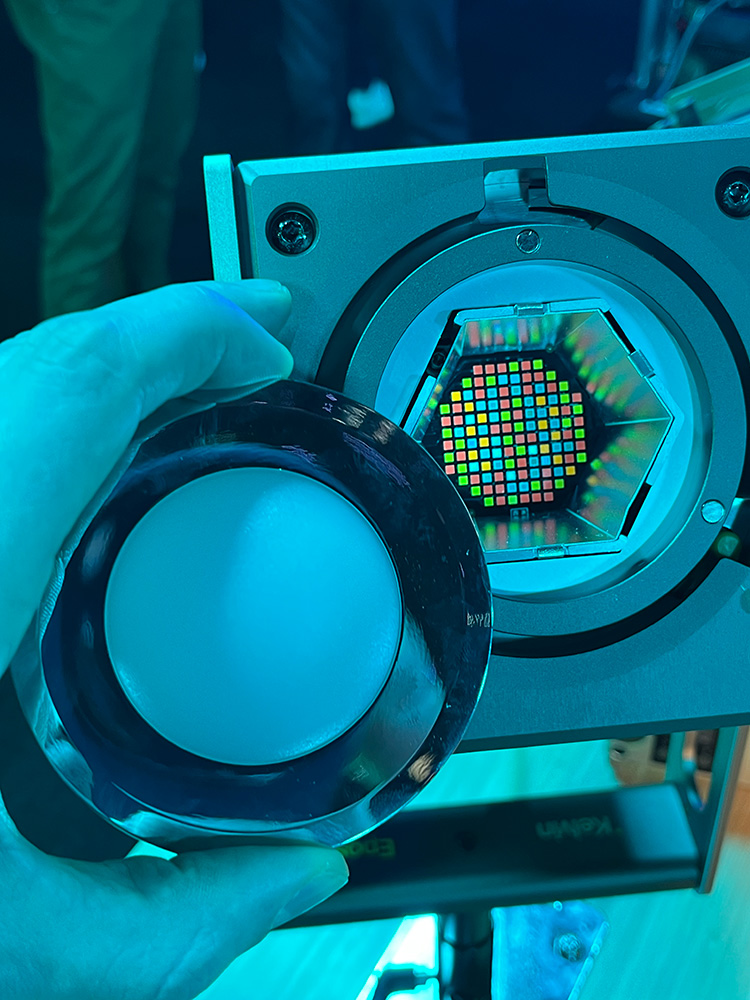
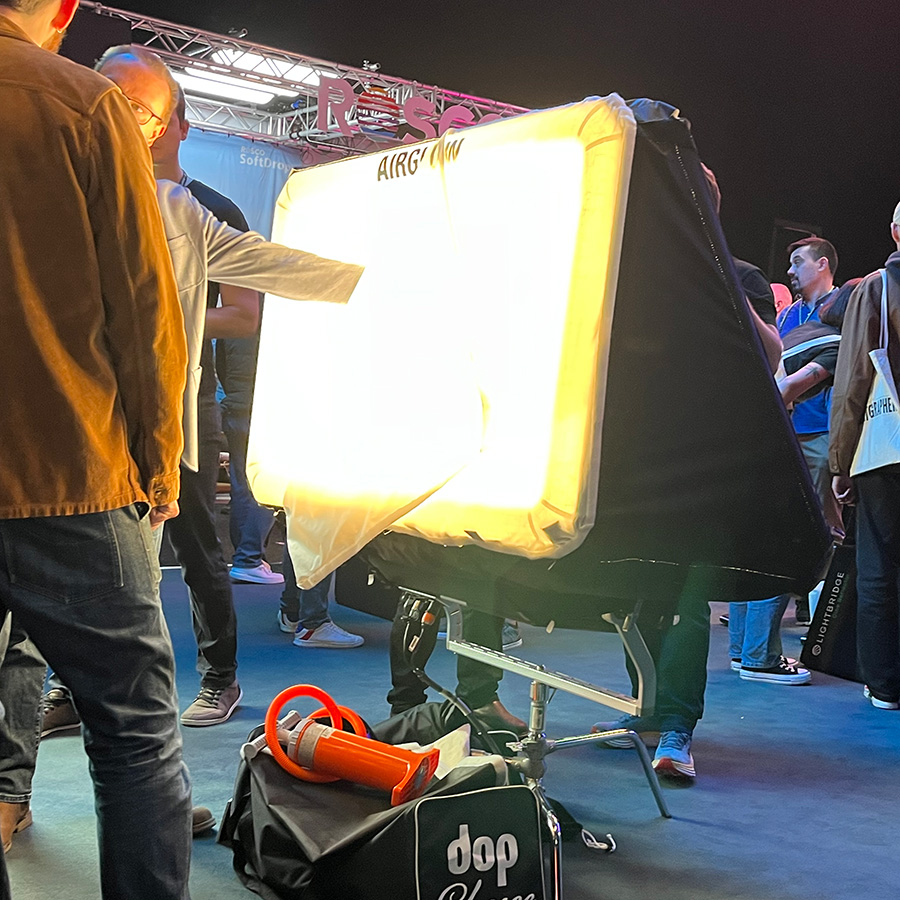
Creamsource shows up their workhorse Vortex series. I don’t see any new units but the conversation piece here is a book light modifier. It kinda looks like a tent and makes the Vortex emulate the design of the old zip lights. It rigs onto a panel pointing up or down, and bounces the light 90 degrees to the side. I can imagine it would render a beautiful result on a portrait. With a laugh, the remark is made that the tent is ideal for the sparks to have a nap in. A welcome addition to our arsenal.
At Astera, the new kid on the block is the more powerful hard lights. They show off the new Pluto and Leo Fresnels; RGBMA units at 80w and 250w respectively. They have opted for the route of integrated batteries and PSU, which add a bit of weight but makes for quick rigging and tidy setups. The units are IP rated and the colour engine is the same as in their trusted tube lights. They argue that what sets them apart is the integration of the batteries, together with the newly designed projection lens which renders beautifully sharp patterns. I can see these being great selling points in the event industry but I’m sure they’ll also find their space on set.

Fiilex present their beautifully crafted Fresnel lights, as well as the attention grabbing G3, which is one of their smaller units but it’s rigged with a newly designed projection mount. This is possibly the most compact RGB projection mount on the market, albeit the unit is only 90w in power. The Fiilex lights come in at a steeper price point but they are beautifully engineered in robust materials and with IP rating. What Fiilex feels makes them stand out is that they have all the development in-house, and they have managed to create very dense arrays of LEDs on their chips which in practice translates to a point source and lends itself very well to fresnel units. The current Fresnel lineup is Q5, Q5, Q8 and Q10, with 90w, 175w, 320w and 900w power draw respectively. They want us to know that a bigger projection mount is in the works.
K5600 shows off the 300w LED version of their classing Joker Lights. This unit still holds a somewhat unique position in the array lens choices, same as the original Joker. They also demo the new Alpha B, a bi-colour 30w LED spotlight.
Senna proudly shows up one of the more powerful panels on the show; the Masterpiece. It’s a 3000w RGBWW IP rated unit, addressable in 4×4 large pixels. They make lenses for it which allow spotting. Weighs in at 34kg’s but it certainly packs a punch.
Prolights is a manufacturer that has snuck under my radar, but they have got an impressive range of fresnel and panels. I’m told they supply many UK studios with equipment which ought to vouch for a good quality colour engine. They seem to be a big player in stage lighting and it feels like it’s more in their DNA to design units for studios and stage, rather than on-location units.
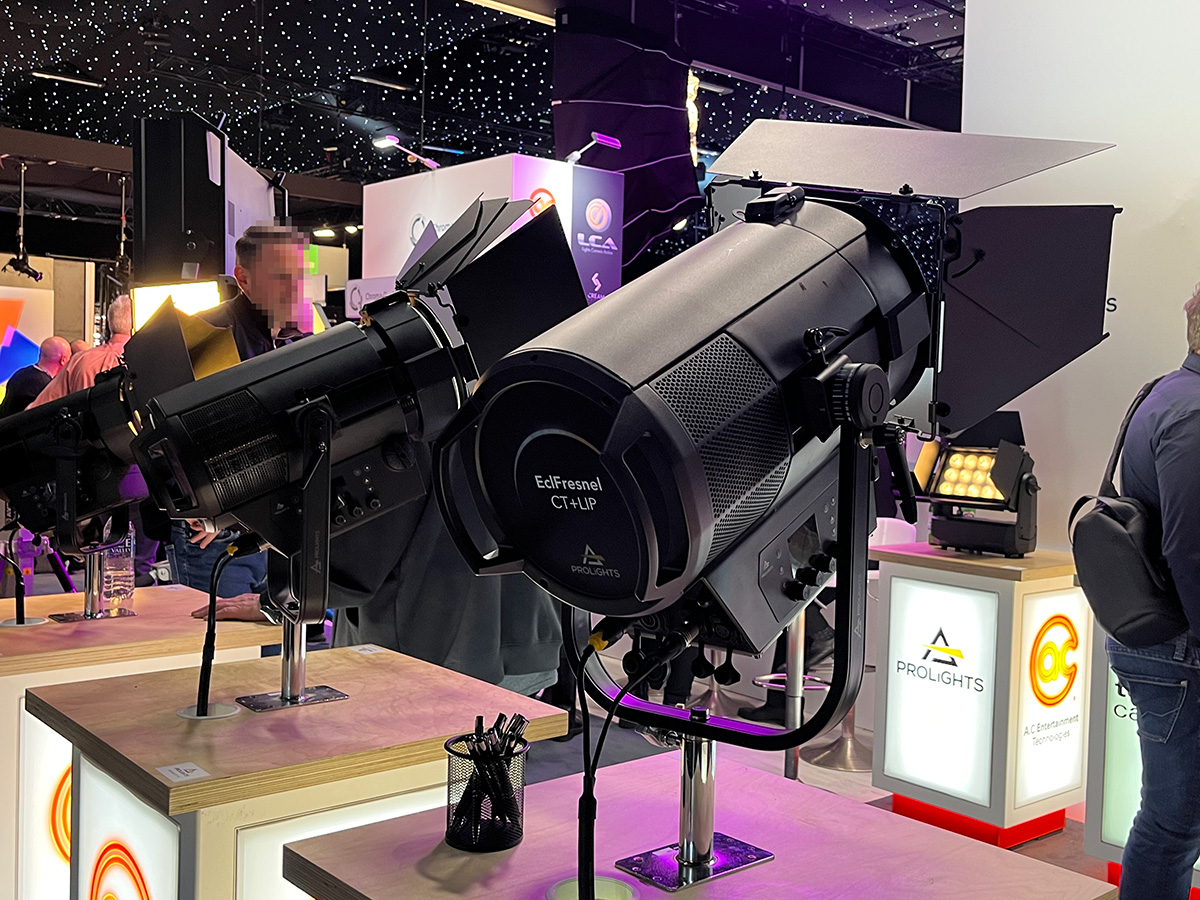
We find Aladdin showcasing their lightweight flexible lights. The latest additions in their line are the MOSAICs which are RGBWW units which come in 2×4’, 4×4’ and 3×6’ sizes, at 350w and 600w respectively. They have tube lights in the new MOSAIC range, they come in 4’ and 8’ at 100w and 200w respectively. They hold on to their positioning, sticking to lightweight and flexible units.
Over at Kino, the new hero product is the MIMIK. Clearly aimed at virtual productions. The BSC expo has a number of different lighting solutions for virtual production, That said. The MIMIK grabbed my attention. It’s essentially a lighting tile that mirrors video content. The RGB video feed is translated into RGBWW and played back on the 120×60 pixels that make up the MIMIK. They claim this is latency free to a volume or video signal, and it can be controlled by a lighting desk as well. The day I dive into the world of VP I’ll come back for a closer look.
I failed to visit Prolycht, Rotolight, K5600 and Sumolight at the expo. Rotolight have upgraded their units with IP rated housings and more output. I’m not aware of any new releases from Prolycht, they were acquired by Aputure in 2023 so there’s probably something new cooking in the new constellation.
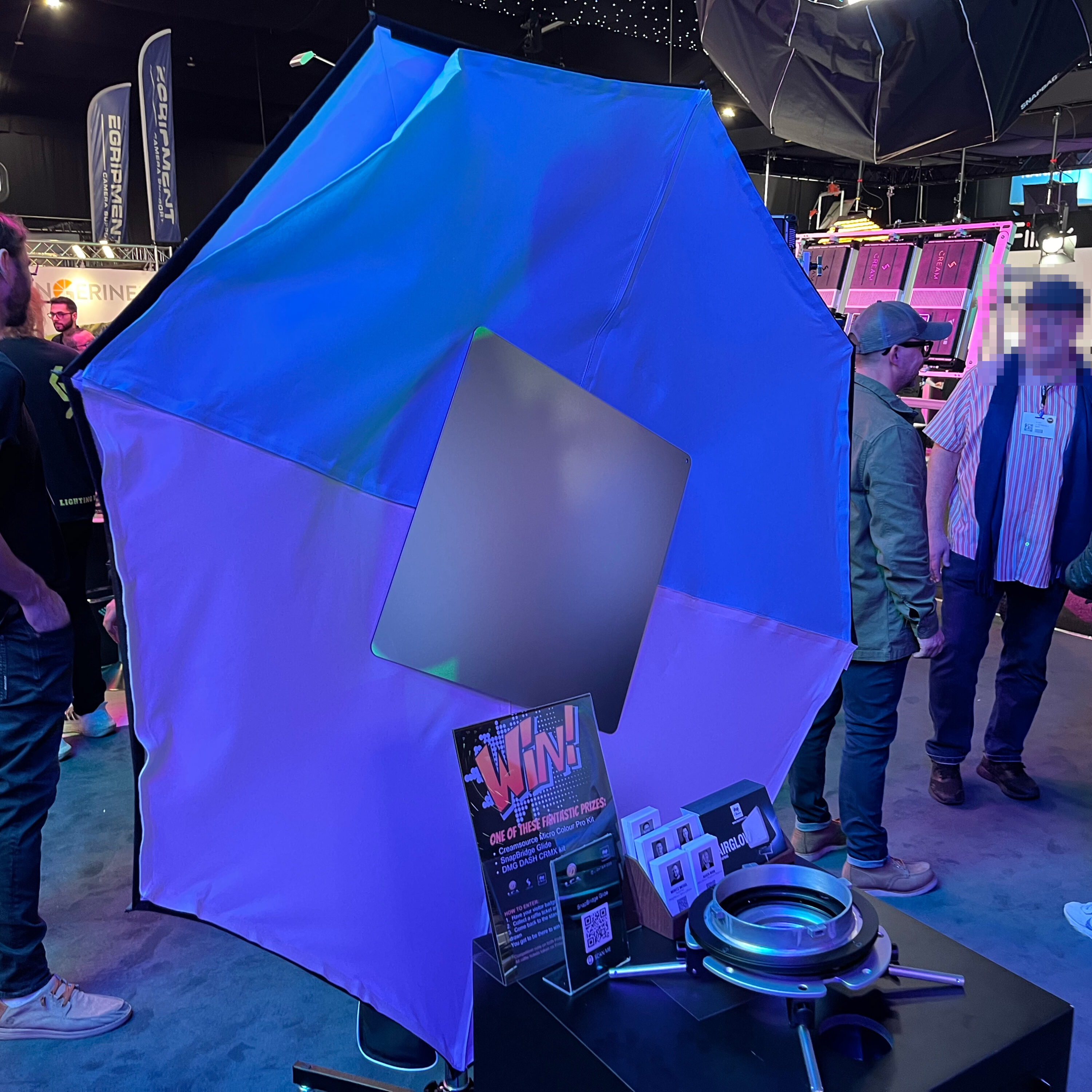

This was one of my favourite finds from the Expo, the SnapBridge from DOP Choice. A reflector umbrella of sorts designed to fit a CRLS mirror inside it. I’ve struggled to get soft and hard light to come from the same direction, ending up with cutting holes in 4×4’ diffusion or rigging mirrors in front of big fabrics. This is a much neater solution. They’ve also thought to make the fabric in the umbrella in an amplitude of different materials, e.g. bleached muslin and two different blue a feel of northern sky. The second purpose of the SnapBridge is to block spill light. If you reverse it you get black umbrella that you can use to kill any spill you might get from your source.
Leaving the expo the number of choices in film lighting feels ridiculous. On my next shoot it’s tempting to bring out the trusted workhorses. But after the conversations at the expo I feel like I can help my lighting department make the good choices and what tools to use. There are definitely a couple of niché scenarios that I know we can manage more effectively, with a higher degree of control, if we utilize these new tools in the right way.
Markus A. Ljungberg, FSF
- In this article I’m largely ignoring the lights for virtual production. I have no experience working with them and that subject deserves an article in itself. ↩︎
- For readability I’m referring to IP rating in general. The various units differ in the specific IP rating, I refer to the specifications of the individual units for the exact IP rating. ↩︎
